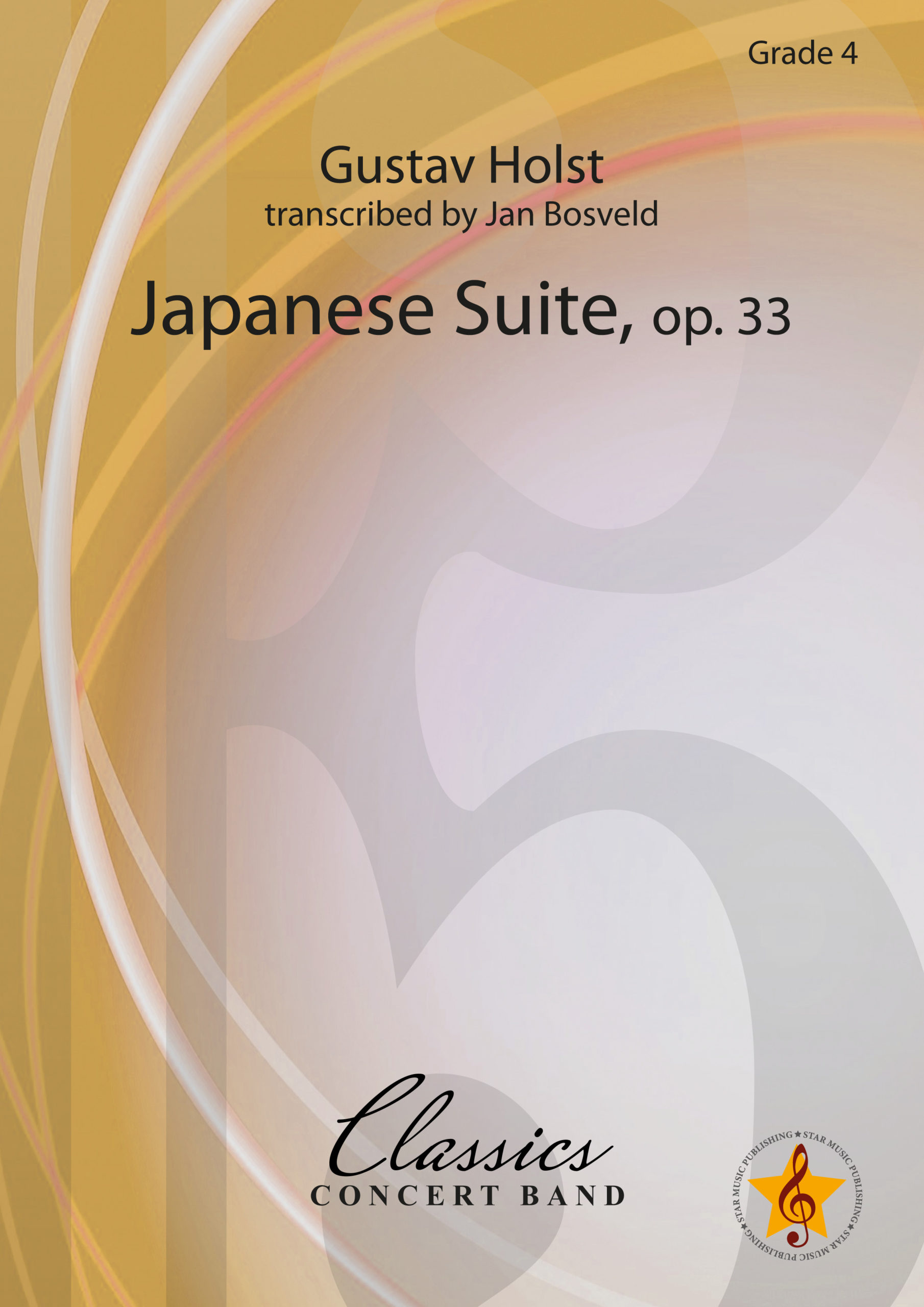Japanese Suite
| Sound File |
actually there is no sound file available |
|---|---|
| Sample Score | SHOW PDF |
| Composer | Holst, Gustav |
| Arranger | Bosveld, Jan |
| Instumentation | Concert Band |
| Grade | 4 |
| Duration | 10:30 |
| Genre | Classical Transcriptions/ Suites |
| Included Parts | |
| Format | DIN A4 |
| Article | SMP-10-0150 |
- Description
Description
(1915) Japanese Suite Op. 33
-Prelude: Song of the Fisherman
-Ceremonial Dance
-Dance of the Marionette
-Interlude: Sing of the Fisherman
-Dance under the Cherry Tree
-Finale: Dance of the Wolves
In the middle of composing The Planets, Gustav Holst wrote Japanese Suite at the request of a Japanese dancer named Michio Ito. Ito was appearing at the London Coliseum and wanted to dance to a work derived from traditional Japanese tunes. Holst didn’t know any tunes, so Ito actually had to whistle several to him.
I don’t think that the piece sounds very “Japanese.” The structure of the suite is four short dances with a long prelude and short interlude, both entitled “Song of the Fisherman.” The piece seems a little trivial to me, ideas are not connected and it is hard to understand what Holst is trying to say. In the “Ceremonial Dance,” the orchestra takes certain sfz without reason and the connections between movements seem a little weak. And the “Dance of the Marionette” sounds like a music box coming out of nowhere.
Now don’t get me wrong, there are some great things going on in this piece. I think that the “Song of the Fisherman” prelude is great music. It contains a melodic tune sweeps through the interlocking harmonies. I also think that the climax of the “Ceremonial Dance” is great, but the piece seems to be an excuse to experiment with certain ideas that Holst had never tried before. For instance, in the Finale, the color of the orchestra sounds more like Stravinsky than Holst, and that color achieved can not be found in any other piece he wrote (that I’ve heard).
It is not known whether or not Michio Ito actually performed to the piece in 1916, but Holst conducted the first concert performance in 1919. The title Japanese Suite stirred a small controversy in England. Michael Short writes that an article appeared in The Times which questioned the national spirit of British composers. Holst who had previously composed Beni Mora (formerly known as the “Oriental Suite”) probably felt some heat from the article.


